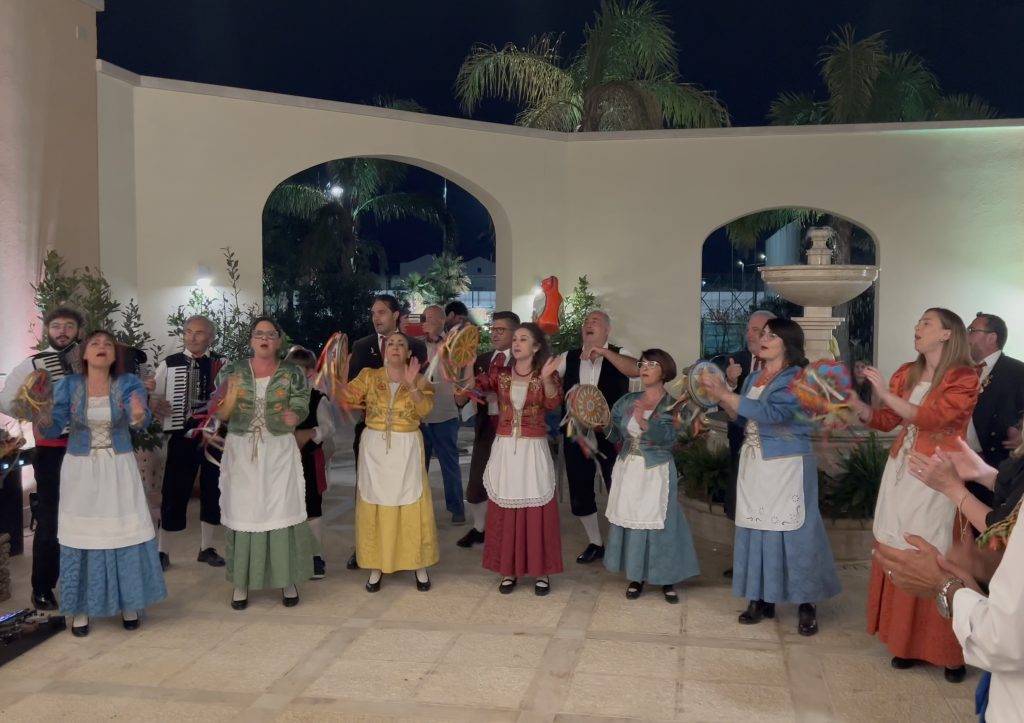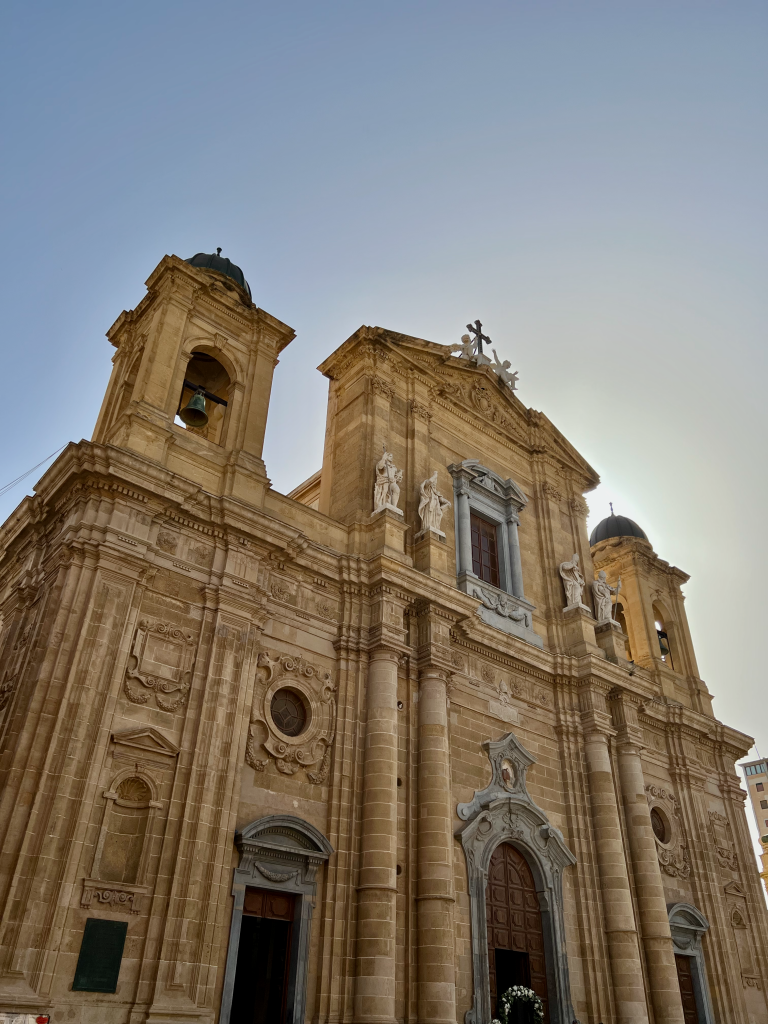
My Arrival Sicily Art Workshop
After three grueling days dealing with plane delays and cancellations, I finally flew into Palermo, Sicily. Rosetta Sciacca, our host, with her husband, Michael Volkov, picked me up with our driver Antonio. It’s the first time I am visiting Sicily, but the topography is very similar to Crete, my parents’ birthplace where I visited many times. We drive south passing countless vineyards and olive groves to the wonderful hotel Baglio Custera. In the evening I visited Marsala with my TA, Bernard Garcia. We entered the town through the Porta Garibaldi, the main city gate. It is not just a gate, but also an architectural masterpiece! We parked the car and started walking around on lovely marble paved traffic-free streets that branched out to narrow picturesque alleys and views. We continued to the Piazza della Republica, Marsala’s main square. In the middle of the square is the beautiful Baroque church, the Chiesa Madre (Mother Church), dedicated to Saint Thomas of Canterbury. We stayed till night when the street lights turned on and lit up the gleaming marble stone pavement, making it look majestic. I imagine the nobles of old strolling the marble paved streets!
Participants’ Arrival
Participants started trickling in: Silvia, Momo, and Zoila met in Palermo the evening before and experienced a premiere at the Teatro Massimo, Italy’s largest opera house. Julie flew to New York from Seattle to meet her friend, Jennifer, and they travelled to Sicily together. Alex came with his fiancé, Jennifer. We decided to call her Jen so we wouldn’t get confused with Julie’s friend Jennifer. Once everyone checked in and freshened up, we had an orientation and reception poolside. Afterward, we were welcomed by Rosetta Sciacca and the warm Sicily Artist Retreats staff with a wonderful dinner at the hotel dining room. We were all excited for the workshop to begin!
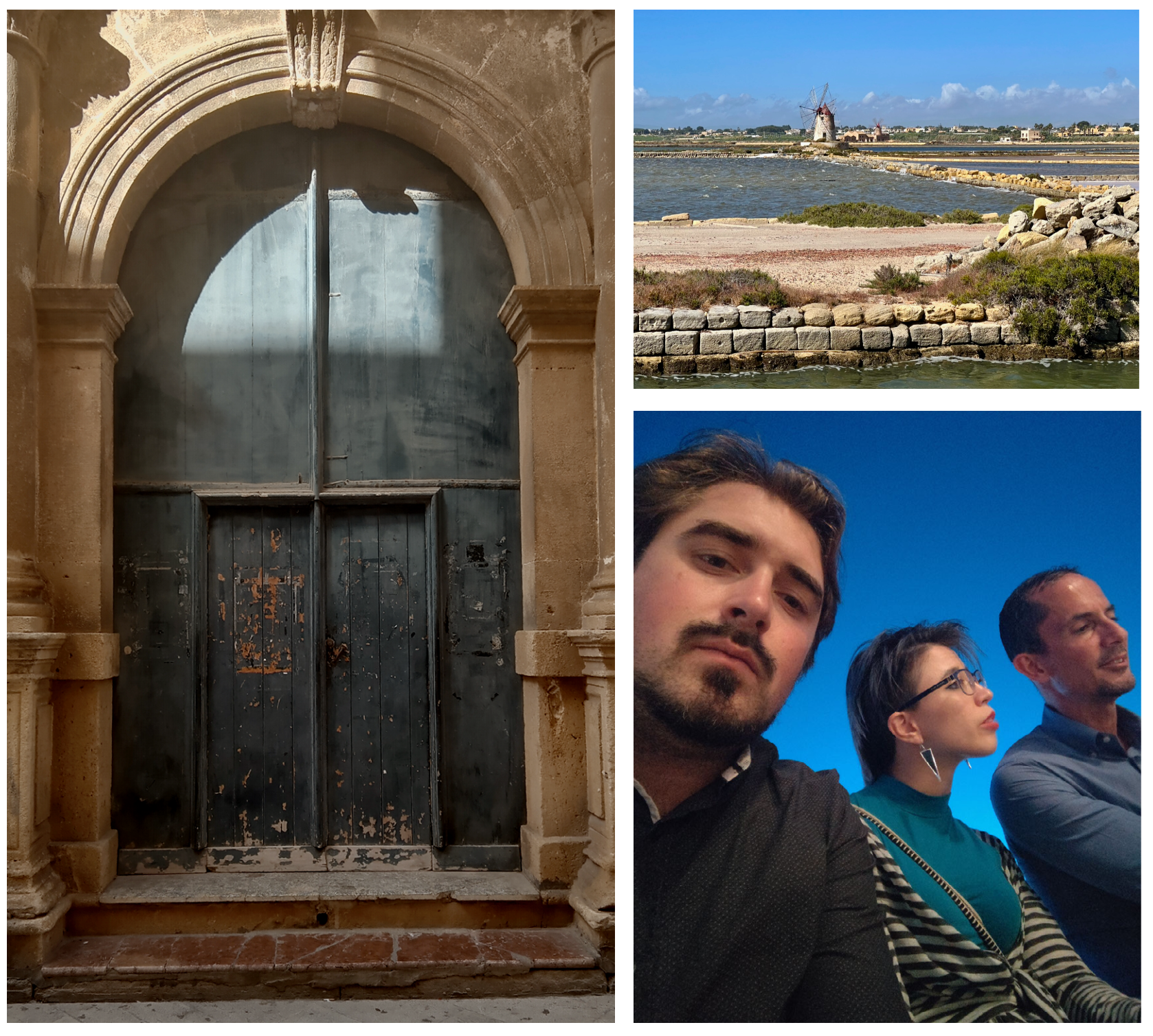
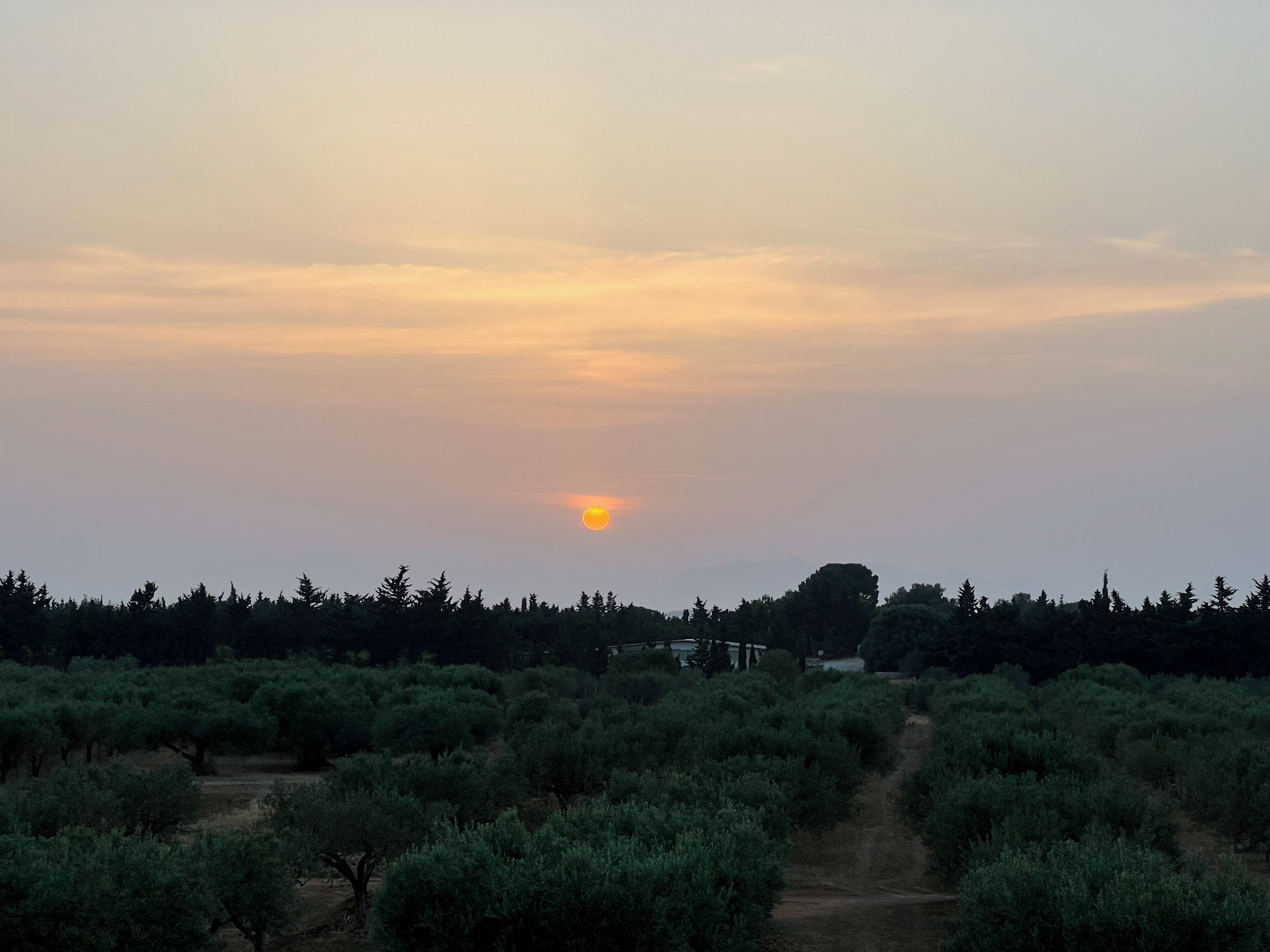
Day 1 | Cantine Fina Marsala
After breakfast on our hotel’s deck overlooking the pool and the olive and citrus groves beyond, we set out for the Cantine Fina winery. One of the premier wineries in Sicily, its spacious structure is built on Marsala’s highest point. We painted on its terrace looking out on the gorgeous Sicilian landscape, which was followed by a catered lunch and wine tasting. We realized right off that we would be eating very well on our trip. Sicilians take pride in their cooking; the chefs will seldom leave you disappointed. One telling characteristic of Sicilian cuisine is that you will rarely eat anything that has not been produced within a few miles of where you are sitting. The key to all of Sicily’s dishes is simplicity, applying the principle of preserving the freshness of the ingredients, and most importantly never letting one taste overpower another. As far as the wines, I was aware of the Sicilian red, Nero D’avola, but the whites that are hardly ever seen in the States were a revelation. The regional white wines in Sicily are made with Grillo, Catarratto, Carricante, Inzolia, Zibibbo, and Greciano grape varieties; they range from savory and crisp to complex and surprisingly age-worthy. The Grillo grape, one of the oldest in Sicily, perhaps best recalls the scents and richness of its region and soil.
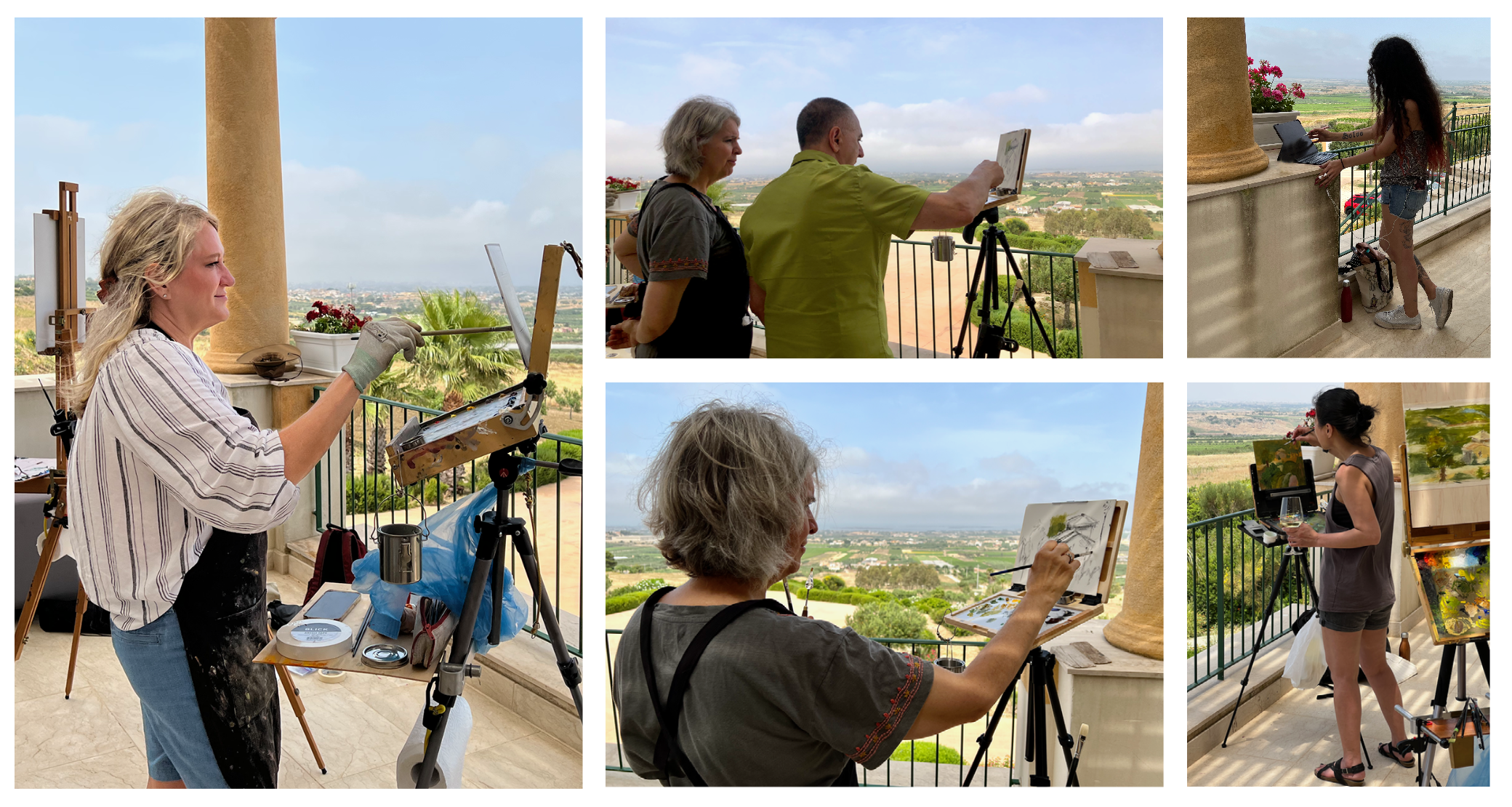
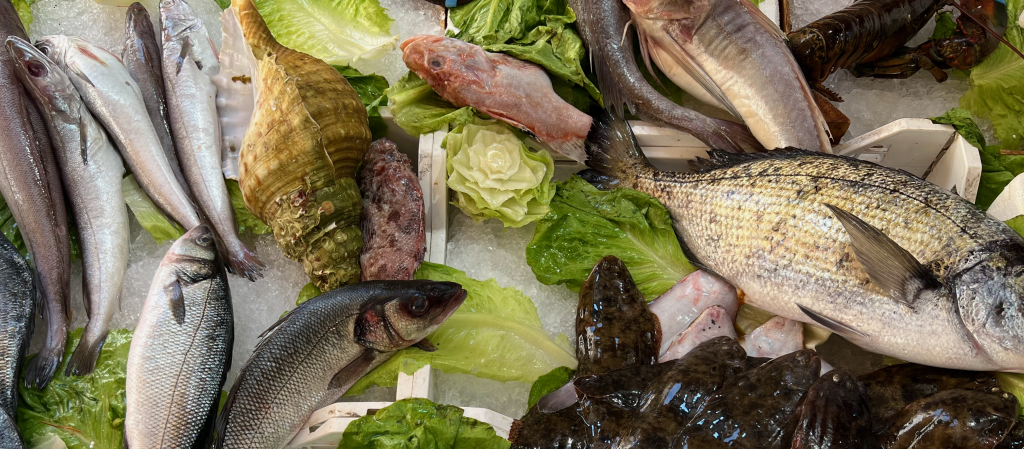
Day 2 | Punic Ship Museum | Marsala Center
We set out to the town of Marsala to tour the Regional Archeological Museum, home of the Marsala Ship, and to paint along the scenic waterfront. Elena Buscemi was our marvelous tour guide! In 1971, the Punic Ship, a Cartheginian war galley, was discovered in the Bay of Marsala, next to the Egadi Islands which we would later visit on our tour. The ship is believed to have fought in the First Punic War between Carthage and Rome and dates back to the mid-third century BC. It was found basically intact and is housed at the Archeological Museum Baglio Anselmi. The museum also houses a Roman-built ship of the same period, discovered years later. Following a nice lunch at Trattoria Garibaldi in the beautiful square, we painted in the town square, where the vice mayor of Marsala paid us a visit.
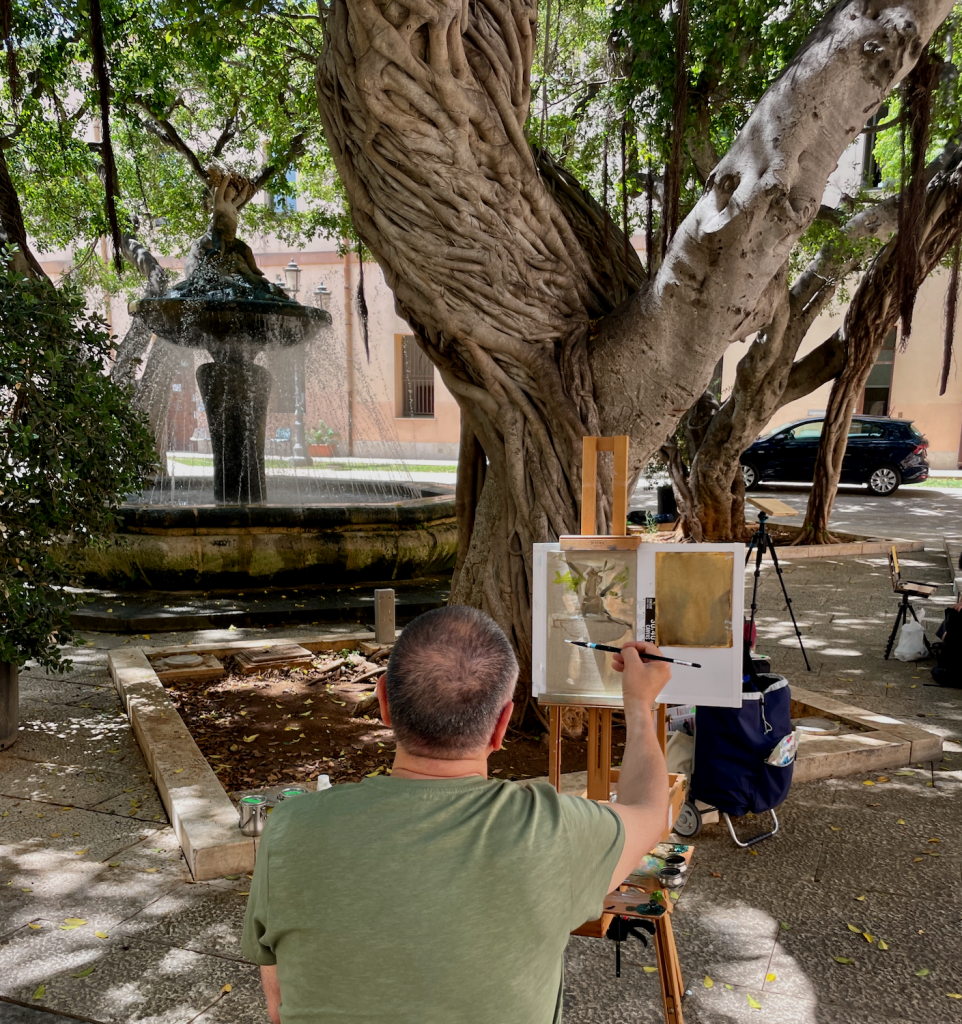
Day 3 | Favignana Island | Florio Cannery Museum Sicily Art Workshop
We took a catamaran excursion to Favignana Island to paint and sketch at the Tonnara Cannery Museum. It is an awesome example of industrial archeology, which preserves the equipment, anchors, and boats used during the annual tuna harvest. Like most evenings we experienced the magical sunsets over the Stagnone Lagoon Reserve, a stunning protected site with its romantic salt pans and windmills.
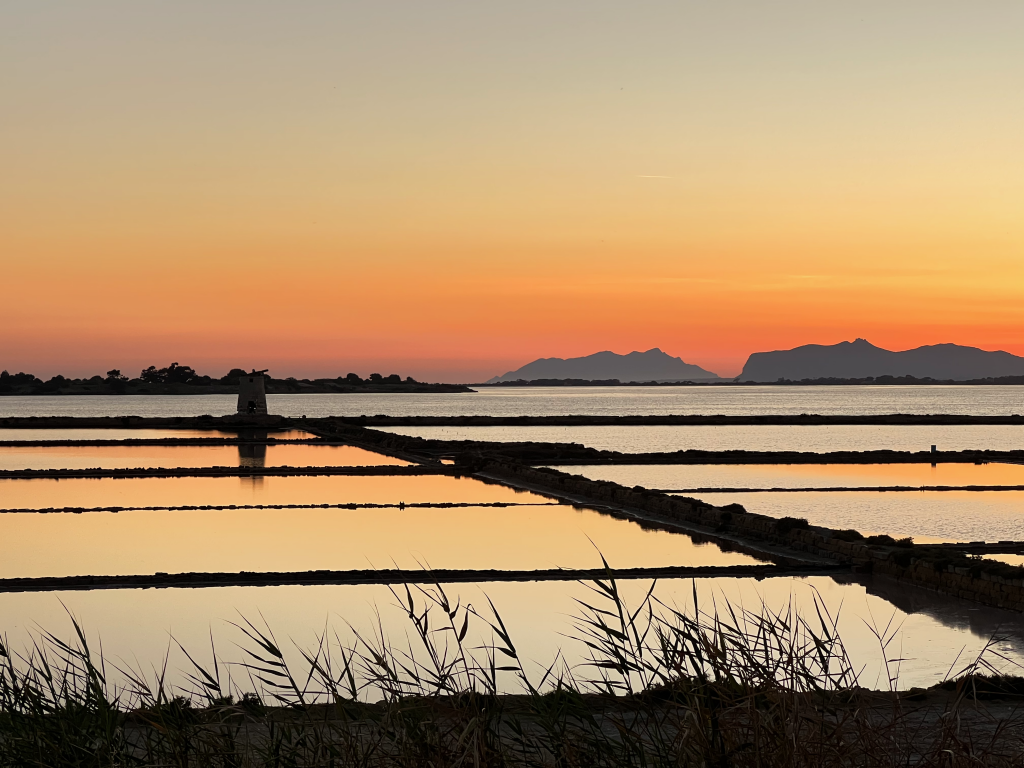
Day 4 | Motya Island
We painted in the Sicily Artists Retreats well-equipped studio with Rosetta’s niece, the lovely Nancy Ombra, posing for us. We then departed by ferry to Motya Island to have a classic Sicilian lunch and local wine. The island of Mozia is an archaeological site of a lost Phoenician settlement. It was bought by the wealthy English merchant Joseph Whitaker at the beginning of the twentieth century in order to cultivate vineyards. But he had a special love for archaeology, so with his own research, many of the Phoenician monuments that we see on the island came to the surface. He created the museum to house a multitude of finds. The main attraction is the amazing Greek marble statue from the 5th century BC, known as Neos of Motya or the Mozia Charioteer, discovered on the island in 1979.
Day 5 | Studio Session | Rosetta’s Birthday
After several excursions on boats, we decided to paint all day in the studio with Nancy doing us the honor of posing again. In the evening we were invited to join Rosetta and Mike’s family and friends for a dinner celebrating Rosetta’s birthday at the Hotel Baglio Custara restaurant.
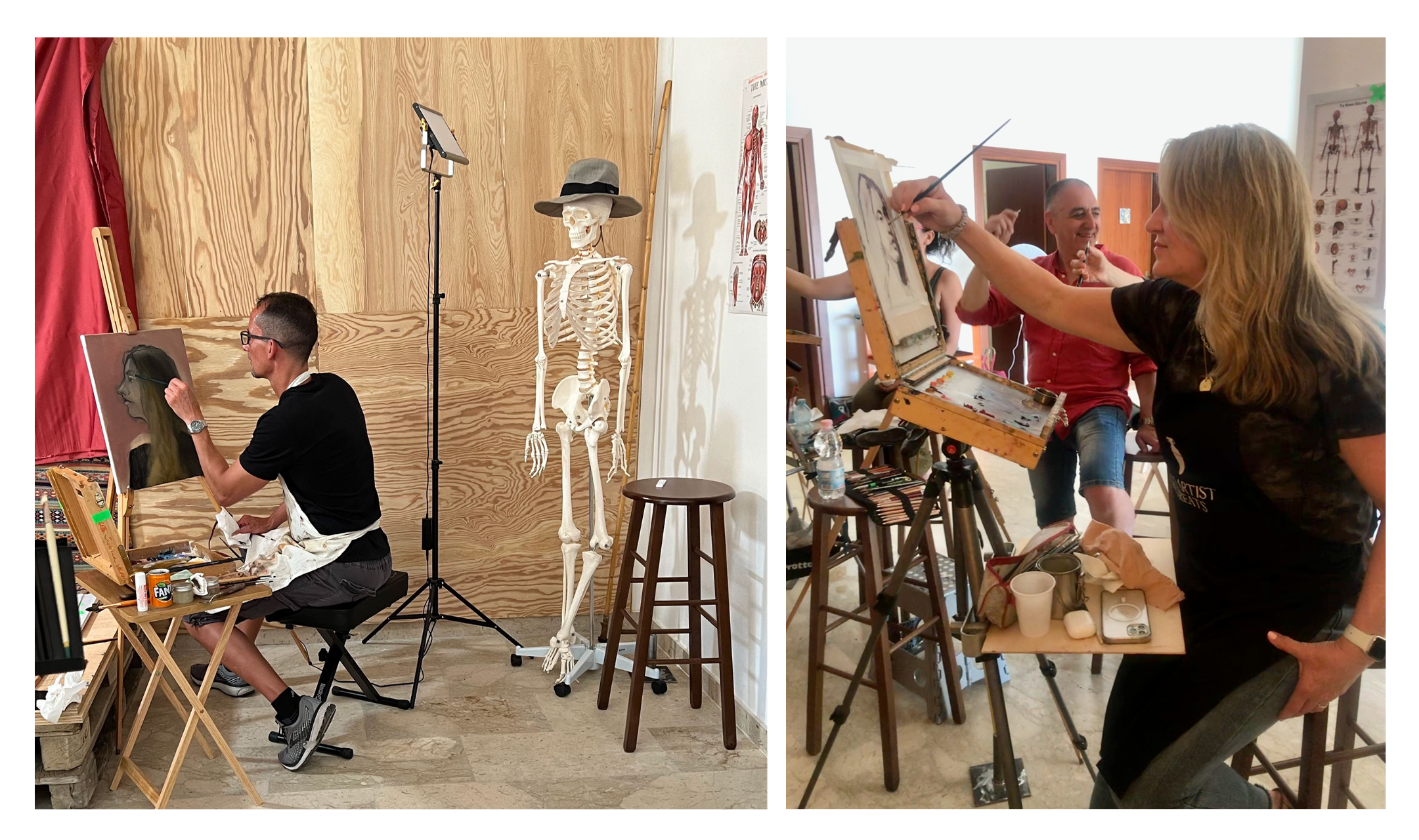
Day 6 | Agrigento Sicily Art workshop
We left early for our two-and-a-half-hour bus ride to paint at the Valley of the Temples. The 6th-century Greek city of Agrigento is one of the best-preserved archeological sites of classical Greek civilization. Situated on the dry arid hilltop scattered amongst olive trees overlooking the Mediterranean Sea, these iconic temples have remained standing for 2,500 years. The expansive archeological park includes seven massive Doric temples. Though some have admittedly have seen better days, there are several that are very much intact.
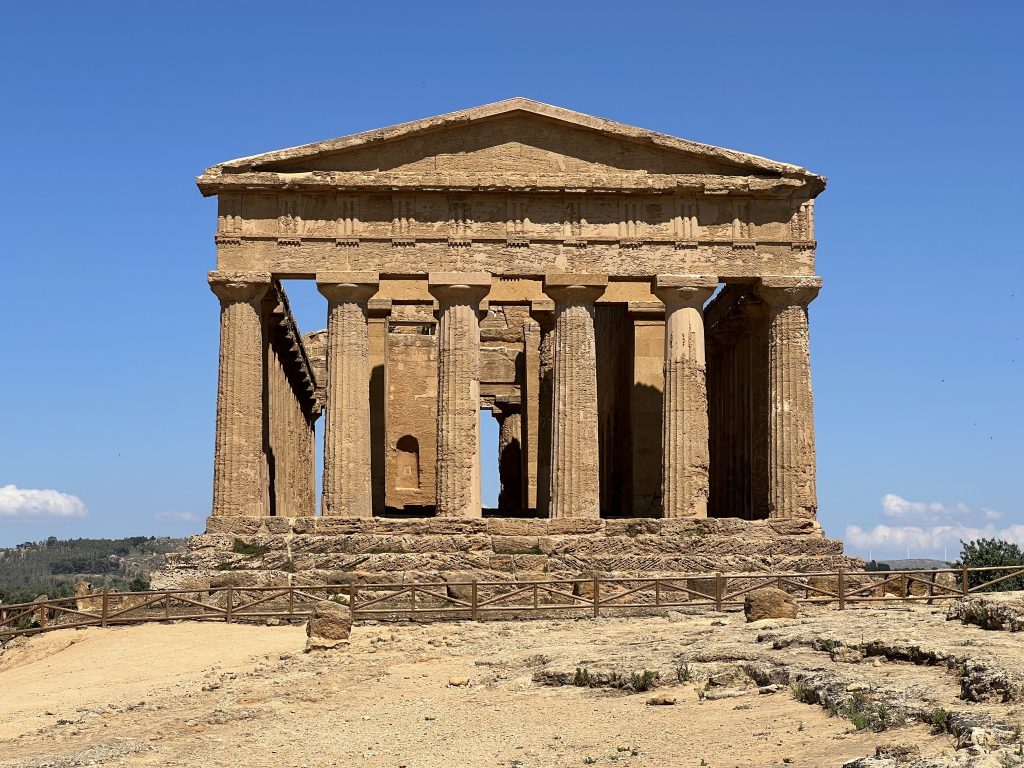
Day 7 | Mazara del Vallo
We set out for Mazara del Vallo, an old historic town full of monumental churches, some dating back to the 11th century. The town features the Islamic urban layout of the neighborhoods, like the so-called Kasbah, an ancient Arab quarter with narrow streets crisscrossed by an endless series of small passageways. The neighborhood is inhabited by a large Tunisian community, which helps to maintain the overall style of the district with tiles and other decorative elements on the facades of the houses. At the Archeological Museum there is an astonishing 4th-century BC bronze sculpture called The Dancing Satyr. The town’s fishermen were instrumental in its recovery, when, in 1998, it became tangled in their nets and was hauled aboard.
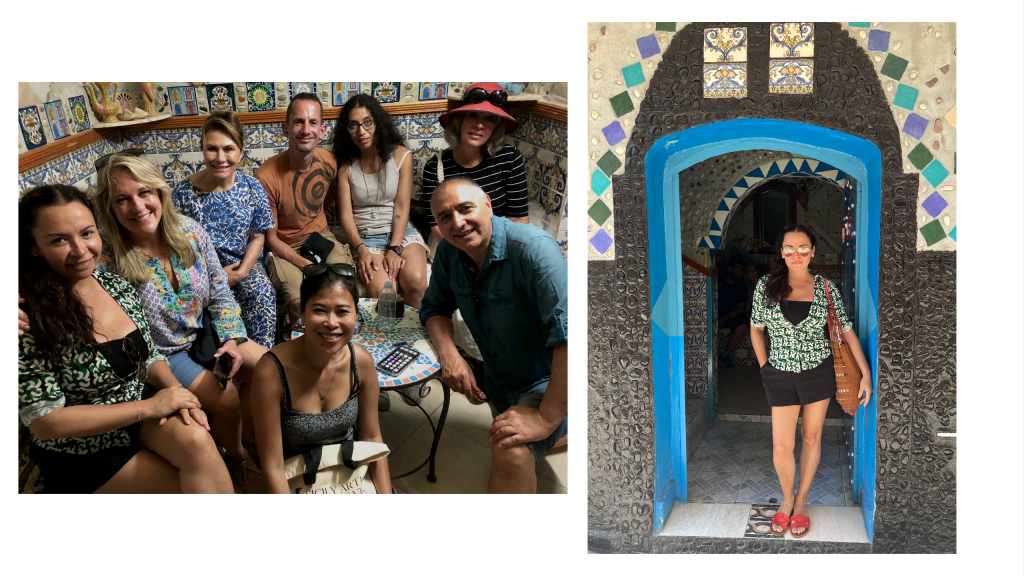
Day 8 | Mount Erice, Tripani Sicily art workshop
On the next to the last day, we visited Mount Erice in Trapani. Erice’s history was embellished by the poet Virgil, who mentioned Erice in his epic work, the Aeneid, making it a stop on the travels of the Trojan hero Aeneas, the mythical founder of Rome. Erice is a wonderfully-maintained medieval town offering the most breathtaking views of Sicilian land and sea. We took a break to experience yummy Sicilian pastries at Pasticceria Maria Grammatico. It was also a perfect place to do our end of the trip shopping. Here you can find exceptional regional ceramics and decorative works. Beautiful, highly-decorated ceramic heads of a Moorish man and a Sicilian woman line the town’s ceramic shops throughout the streets of Erice. Legend has it, a Sicilian noblewomen fell in love with a Moorish prince. She couldn’t bear the fact that he had a family in a distant land and would have to leave her. In desperation she killed him, chopping off his head so that she could keep him near her. She buried the head in a pot, planting it with basil, which she watered with her tears. The locals say that the ceramic heads representing these two lovers bring good fortune.
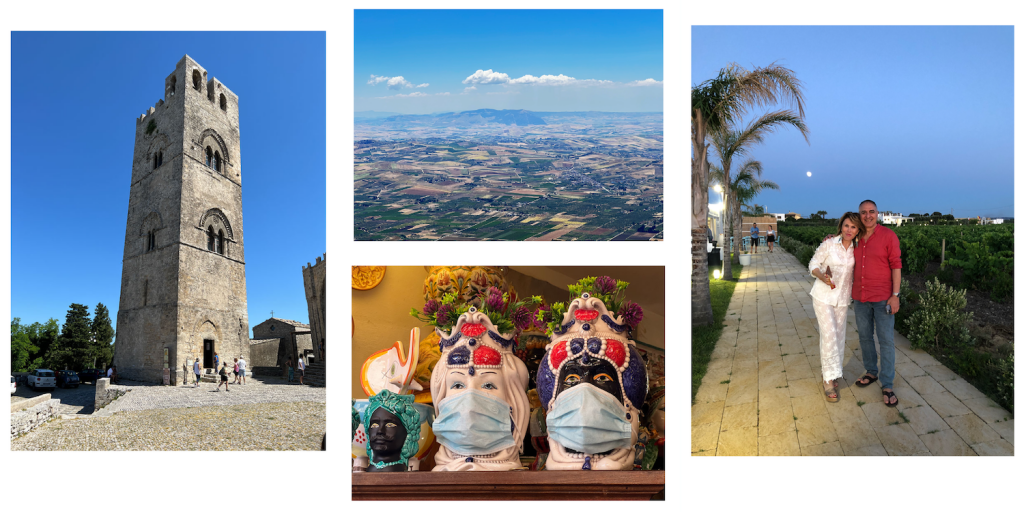
Costa and Rosetta at sunset with moon over Marsala
Day 9 | Last Day Sicily art workshop
On the last evening we were welcomed with a cocktail reception and dinner by a very warm Sicilian community at Rosetta and Michael’s beautiful home. The traditional folk dancing troupe delivered an amazing performance. It was also heartwarming to attend a party that included the mayor of Marsala as well as Antonio, our bus driver and his family.
